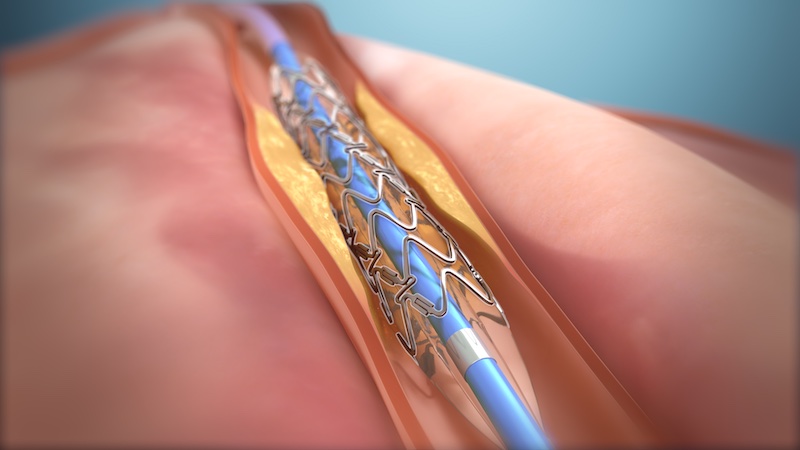New treatment for coronary artery disease
The drug-eluting cardiovascular device moves more naturally with the artery wall.

The DynamX Coronary Bioadaptor System.
US-based Elixir Medical Corp has come up with a new drug-eluting cardiovascular device called the DynamX Coronary Bioadaptor System, which may improve patients’ outcomes further. The bioadaptor is designed to move more naturally with the artery wall in response to the needs for more oxygen demanded by the heart such as during exercise. It also allows the artery to expand to accommodate any new plaque build-up, maintaining the diameter of the treated area for good blood flow over time.
This new class of treatment for coronary artery disease (CAD) is unlike the current gold standard of treatment which is using a drug-eluting stent (DES) to open up the narrowed arteries. Though these stents work efficiently, they are rigid and permanently cage the vessel which has been associated with major adverse cardiac events.
Prof Jack Tan, deputy head and senior consultant, Department of Cardiology, National Heart Centre Singapore, and head of cardiology, Sengkang General Hospital, explained that there is a two to three percent adverse event rate that occurs with DES each year. This “may be attributed to strut fractures, loss of vessel compliance, vasomotion, and the capability for vascular adaptive remodelling”, he shared.
In Singapore, cardiovascular disease accounted for 29.3 percent of all deaths in 2019, according to the Singapore Heart Foundation. This means that almost one out of three deaths are due to heart disease or stroke. This new treatment gives patients more options to discuss with their cardiologist.
According to Prof Lim Soo Teik, deputy medical director and senior consultant, Department of Cardiology, and director of the Cardiac Catheterisation Laboratory, National Heart Centre Singapore (NHCS), 15 patients at NHCS have received the bioadaptor, of which around 10 are over the age of 50. They are good candidates for the bioadaptor if provided their vessels are not calcified, explained Prof Lim.
He added that the recovery process is the same as having a DES. “The patient will usually be discharged the next day. He or she can resume light activities very soon after and back to normal activities after a few days,” he said. However, he added that patients will still need to take their follow-up medications and stop smoking.
The bioadaptor recently underwent a 24-month clinical study with 50 patients and found that it showed strong safety profile, no target vessel revascularisation and no device thrombosis (blood clotting). This added to previous published data on the bioadaptor which also showed its ability and artery to expand and keep the vessel open, preserving good blood flow over time, and there was normal artery motion with each heartbeat, enabling the artery to provide more blood flow in response to the body’s needs during physical activity. The data also found that the bioadaptor and its drug coating inhibited disease progression and supported the vessel during healing. Elixir Medical however shared that more data would be required to prove superiority over the current DES treatment.
Though the costing of DynamX is not fixed, Prof Lim shared that it is around the same as the DES which is S$2,500 to S$3,000 per stent. The bioadaptor is currently available at the National Heart Centre Singapore and Tan Tock Seng Hospital. Elixir Medical is hoping to have the bioadaptor available also in other hospitals.
Besides Singapore, DynamX is currently available commercially in Hong Kong and the UAE. It is also available or will be available shortly in Japan, Germany, Belgium, Sweden and New Zealand through a clinical trial. The company also have plans to roll out DynamX in Malaysia, Vietnam, Taiwan, Thailand, Middle East and selected countries in Europe this year.

The latest solution is : https://thelongevityprotocol.com/indexB_190329A.php?n=db
Better still is the prevention of heart attack & stroke by clearing the plaque in the blood artery with 2 silkworm extract tablets daily from age 40,